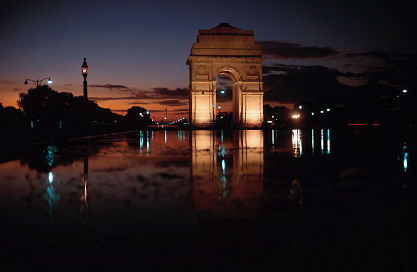Gateway of India
Located on the waterfront in south Mumbai, the Gateway is a basalt arch 26 metres high. It is traditionally the first thing visitors arriving by boat would see of Bombay. Behind the Gateway steps lead down to the waterfront, where boat trips can be had to locations such as Elephanta Island.
The Gateway is built from yellow basalt and reinforced concrete. While Indo-Saracenic in architectural style, elements are derived from the Muslim architectural styles of 16th century Gujarat. The central dome is 15 metres in diameter and 26 metres above ground at its highest point. The whole harbour front was realigned in order to come in line with a planned esplanade which would sweep down to the centre of the town. The cost of the construction was Rs. 21 lakhs, borne mainly by the Government of India. For lack of funds, the approach road was never built, and so the Gateway stands at an angle to the road leading up to it.
The Gateway of India was built to commemorate the visit of King George V and Queen Mary to Bombay, prior to the Darbar in Delhi in December 1911. The foundation stone was laid on March 31, 1911 by the Governor of Bombay, with George Wittet's final design sanctioned in August 1914. Between 1915 and 1919 work proceeded on reclamations at Apollo Bunder for the land on which the gateway and the new sea wall would be built. The foundations were completed in 1920, and construction was finished in 1924. The Gateway was opened on December 4, 1924 by the Viceroy, the Earl of Reading. The last British troops to leave India, the First Battalion of the Somerset Light Infantry, passed through the gate in a ceremony on February 28, 1948. The adjacent Taj Mahal Palace and Taj Intercontinental hotels are a major landmark, and a popular tourist destination. It is one of the most visited monuments in Bombay.
